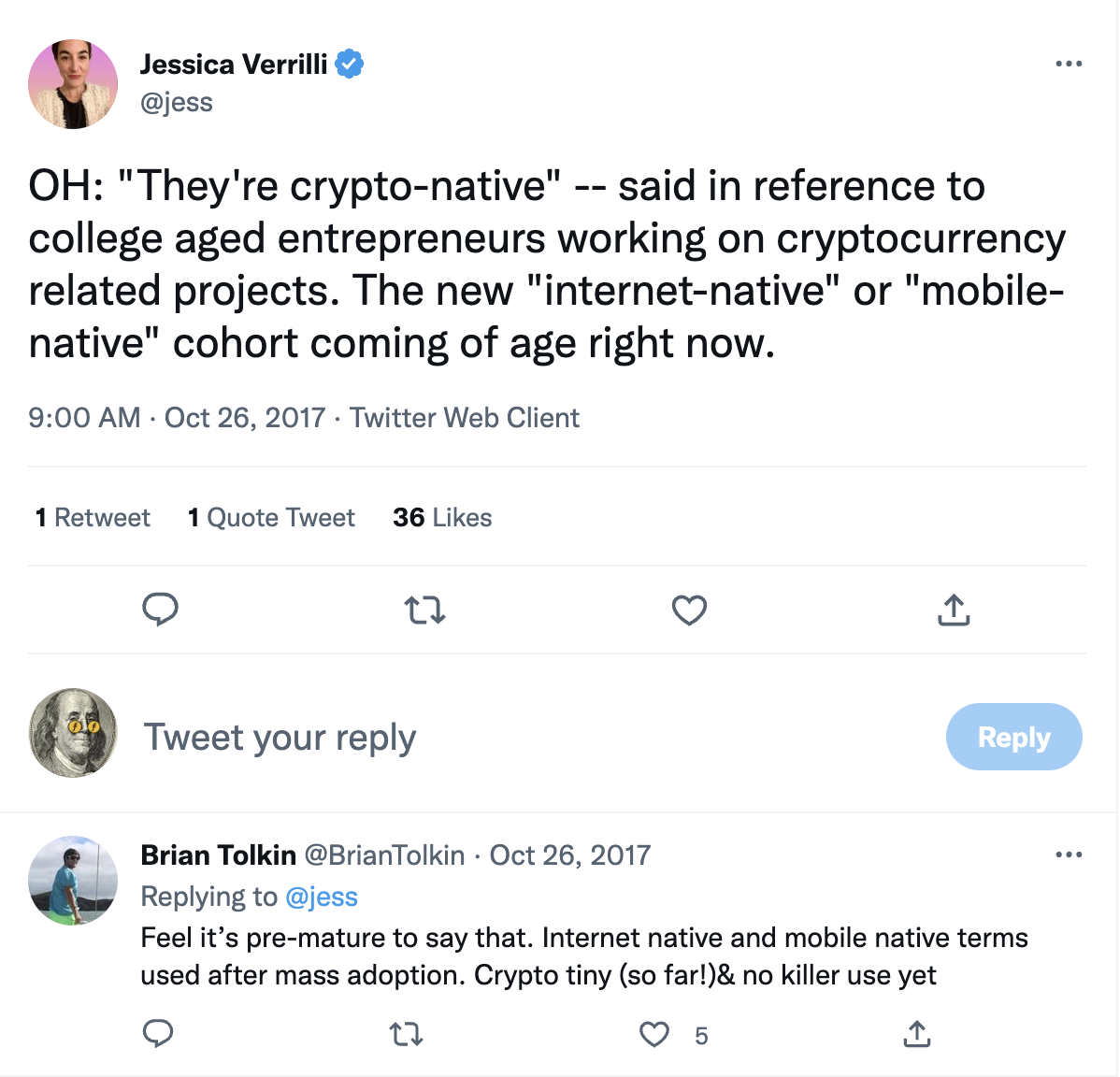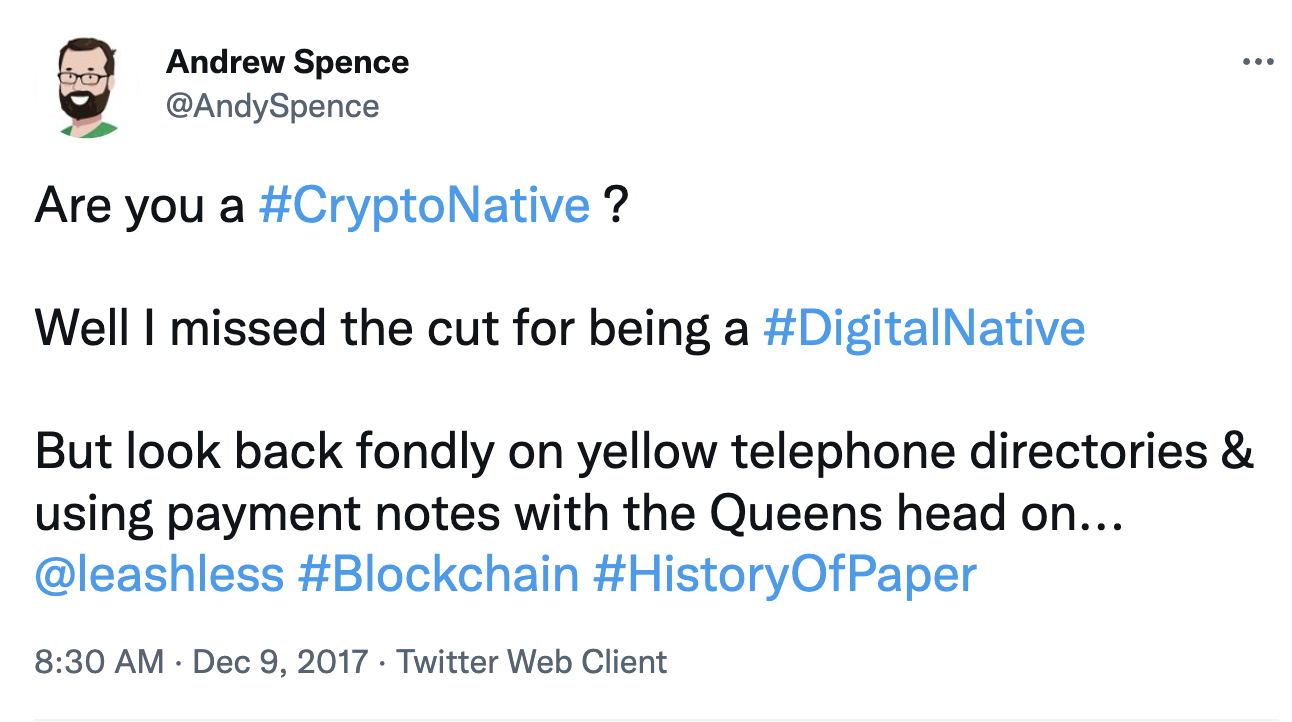Starting in 2021, Crypto Native has gradually entered the encryption industry. Almost every newcomer who has just entered the circle has heard this term, because the old people in the circle always talk about it. But if you want to ask what the word "old man" means in the circle, some people may not be able to answer it. As for what Crypto Native is, everyone may have different answers. But does it mean refreshing information about Crypto on Twitter every day, transferring most of the property to BTC or ETH, staring at the market every day to analyze market data, or just talking about "decentralization" and other big words? Maybe both, maybe not.
image description

first level title
The Ins and Outs of Crypto Native
Crypto Native in the encrypted world is the continuation of the idea of decentralization of native cryptocurrencies. The narrative starting point of Crypto Native is Satoshi Nakamoto and Bitcoin. As the cornerstone of cryptocurrency, Bitcoin, the idea of decentralization and trustless mechanism behind it is the origin of the concept of Crypto Native.
Since the birth of Bitcoin in 2008, the world has had the first batch of Crypto Native groups. Under the influence of the Mentougou money theft incident and the dark web "Silk Road", Bitcoin entered a cold winter after reaching its peak in 2011. This group of people who actually own and trade Bitcoin believe in cryptography algorithms and blockchain technology, and advocate "Code is Law". At this time, Crypto Native is someone who believes in cryptographic algorithms and owns and uses Bitcoin at the same time.
Over time, Bitcoin has been given the title of "digital gold", and its commodity attributes have robbed the limelight of currency attributes. Due to the entry of a large number of people and funds, the early infrastructure of the encryption industry was gradually built and improved during this period, and mining machines, payment scenarios, trading platforms, and financial derivatives were gradually matured. The rapid growth of Bitcoin computing power is a good proof .
When the time came to 2014, a significant event happened. The founder of Ethereum, Vitalik Buterin, released the white paper of the first version of Ethereum, and pre-sold ETH on July 24, 2014. Then the Ethereum virtual machine EVM and smart contracts came into being, which marked the entry of a new era in the encryption industry. Similarly, the holding objects of Crypto Native at this time are not limited to Bitcoin, but also include Ethereum or other cryptocurrencies, but this group still firmly believes in the cryptocurrency system established by cryptography and blockchain technology.
With the establishment and improvement of the Ethereum ecology, people's imagination for the public chain ecology has been fully utilized. With the emergence of ICO, a new type of financing method, more and more dAPPs let people see the application of the blockchain. value. Not only that, financial derivatives on the chain have also begun to develop, and derivatives such as contracts and loans have also promoted the prosperity of centralized exchanges.
Original link

Original link

Original link

In addition to the superficial interpretation of the word, Crypto Native also represents a business model. Daniel explained the definition of Crypto-native from the perspective of Crypto Native Person and Crypto Native Business in December 2020:
A Crypto Native Person is someone who bought cryptocurrency before owning any other assets (stocks, bonds, etc.).
Crypto Native Business is a decentralized protocol that supports functionality currently provided by CeFi or tradFi.
Original link

first level title
secondary title
Decentralized Decentralized
secondary title
Trustless without trust mechanism
secondary title
Permissionless without permission
secondary title
Individual Sovereignty
Crypto Native also places special emphasis on personal sovereignty, which is also a major difference between Web3 and Web2, especially the ownership of Token and data. Use the traditional Web2 to write articles, post, chat, and comment, all of which will be reviewed and may be deleted. In the Web3 era, these data belong to the user, and the data does have a certain ability to resist censorship and is difficult to lose. Why can Web3 make ownership but it is difficult for Web2? A very important technology is to have verifiability when the data is generated, which allows these assets and data to have ownership. The moment they are on-chain, the blockchain generates a verifiable time series that establishes ownership at the consensus level. When our articles and other content are published on traditional central servers and single-point servers, there may be several backups, but these servers are all managed by some service providers, and service providers can also provide proof of ownership, but Data ownership belongs entirely to these centralized entities. Look at the content platform Mirror again, which sends NFT to Ethereum and stores the content on decentralized storage such as Arweave. Even if Mirror is shut down one day, anyone can get the data to restart the platform and trace, verify and confirm the data and assets.
Now more and more people are concerned about how to tell the story of Crypto, how to break the shackles of centralized finance, network and society, and how to build a free and equal world. Never before in human history does this wave seem to have been more intense and widespread. The underlying goal of Crypto Native is that this group believes that the technology brought by the encrypted world can solve many deep-rooted intractable diseases in the real world. The Crypto Native group on the world stage of Web3 is practicing the concept of Decentralized, polishing Trustless products, and building a Permissionless market, thus creating a society that effectively protects individual sovereignty. This is exactly the light I see in the eyes of Crypto Native practitioners.



